
Herbert Wayne "Herb" Boyer is an American biotechnologist, researcher and entrepreneur in biotechnology. Along with Stanley N. Cohen and Paul Berg, he discovered a method to coax bacteria into producing foreign proteins, which aided in jump-starting the field of genetic engineering.

William Howard Stein was an American biochemist who collaborated in the determination of the ribonuclease sequence, as well as how its structure relates to catalytic activity, earning a Nobel Prize in Chemistry in 1972 for his work. Stein was also involved in the invention of the automatic amino acid analyzer, an advancement in chromatography that opened the door to modern methods of chromatography, such as liquid chromatography and gas chromatography.
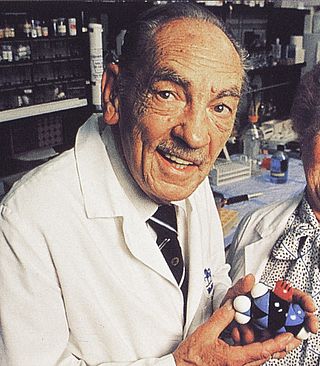
George Herbert Hitchings was an American medical doctor who shared the 1988 Nobel Prize in Physiology or Medicine with Sir James Black and Gertrude Elion "for their discoveries of important principles for drug treatment", Hitchings specifically for his work on chemotherapy.

Avram Hershko is a Hungarian-Israeli biochemist who received the Nobel Prize in Chemistry in 2004.
Affinity chromatography is a method of separating a biomolecule from a mixture, based on a highly specific macromolecular binding interaction between the biomolecule and another substance. The specific type of binding interaction depends on the biomolecule of interest; antigen and antibody, enzyme and substrate, receptor and ligand, or protein and nucleic acid binding interactions are frequently exploited for isolation of various biomolecules. Affinity chromatography is useful for its high selectivity and resolution of separation, compared to other chromatographic methods.

Rolf Joachim Benirschke is an American former professional football player who was a placekicker in the National Football League (NFL). He played for the San Diego Chargers from 1977 until 1986. He is probably most known for missing a potential 27-yard game-winning field goal in overtime of the playoff game known as the "Epic in Miami” but then getting a second chance and connecting from 29 yards fourteen minutes into overtime to win the game on January 2, 1982.

Kyriacos Costa Nicolaou is a Cypriot-American chemist known for his research in the area of natural products total synthesis. He is currently Harry C. and Olga K. Wiess Professor of Chemistry at Rice University, having previously held academic positions at The Scripps Research Institute/UC San Diego and the University of Pennsylvania.
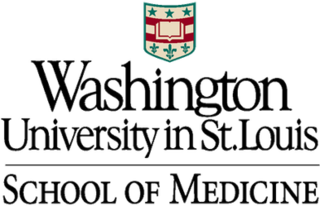
Washington University School of Medicine (WUSM) is the medical school of Washington University in St. Louis, a private research university with its main campus in St. Louis County, and Clayton, Missouri. Founded in 1891, the School of Medicine shares a campus with Barnes-Jewish Hospital, Alvin J. Siteman Cancer Center, and Central Institute for the Deaf. It has consistently ranked among the top medical schools in the United States in terms of the number/amount of research grants/funding awarded by the National Institutes of Health, among other measures.
George Feher was an American biophysicist working at the University of California San Diego.
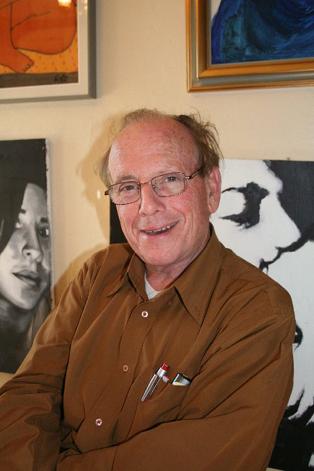
Alexander Levitzki is an Israeli biochemist who is a professor of biochemistry at the Alexander Silberman Institute of Life Sciences, the Hebrew University of Jerusalem.
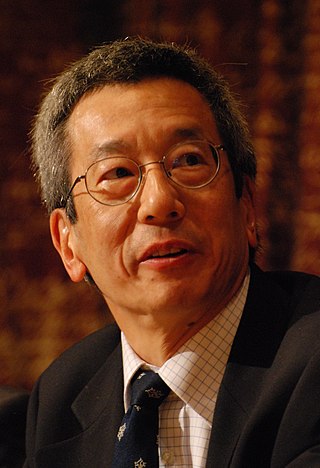
Roger Yonchien Tsien was an American biochemist. He was a professor of chemistry and biochemistry at the University of California, San Diego and was awarded the Nobel Prize in Chemistry in 2008 for his discovery and development of the green fluorescent protein, in collaboration with organic chemist Osamu Shimomura and neurobiologist Martin Chalfie. Tsien was also a pioneer of calcium imaging.

Meir Wilchek is an Israeli biochemist. He is a professor at the Weizmann Institute of Science.
Shang Fa Yang was a Taiwanese-American botanist. He was a professor at the University of California, Davis. He was awarded the 1991 Wolf Prize in Agriculture and was elected a member of the US National Academy of Sciences the year before.

Philippa "Pippa" Marrack, FRS is an English immunologist and academic, based in the United States, best known for her research and discoveries pertaining to T cells. Marrack is the Ida and Cecil Green Professor and chair of the Department of Biomedical Research at National Jewish Health and a distinguished professor of immunology and microbiology at the University of Colorado Denver.
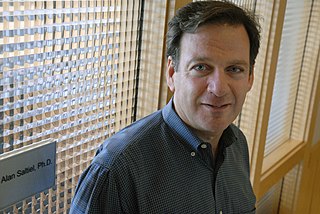
Alan Robert Saltiel is an American endocrinologist and biochemist. He is Distinguished Professor of Medicine and Pharmacology, holds the Maryam Ahmadian Endowed Chair in Metabolic Health, the Director of the UCSD/UCLA Diabetes Research Center and Director of the Institute for Diabetes and Metabolic Health at the University of California, San Diego.
The history of chromatography spans from the mid-19th century to the 21st. Chromatography, literally "color writing", was used—and named— in the first decade of the 20th century, primarily for the separation of plant pigments such as chlorophyll and carotenoids. New forms of chromatography developed in the 1930s and 1940s made the technique useful for a wide range of separation processes and chemical analysis tasks, especially in biochemistry.
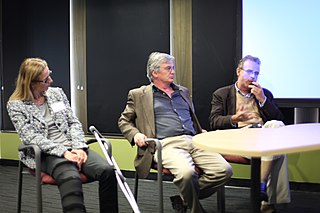
Napoleone Ferrara, is an Italian-American molecular biologist who joined University of California, San Diego Moores Cancer Center in 2013 after a career in Northern California at the biotechnology giant Genentech, where he pioneered the development of new treatments for angiogenic diseases such as cancer, age-related macular degeneration (AMD), and diabetic retinopathy. At Genentech, he discovered VEGF—and made the first anti-VEGF antibody—which suppresses growth of a variety of tumors. These findings helped lead to development of the first clinically available angiogenesis inhibitor, bevacizumab (Avastin), which prevents the growth of new blood vessels into a solid tumor and which has become part of standard treatment for a variety of cancers. Ferrara's work led also to the development of ranibizumab (Lucentis), a drug that is highly effective at preventing vision loss in intraocular neovascular disorders.

Anthony Rex Hunter is a British-American biologist who is a professor of biology at the Salk Institute for Biological Studies and the University of California San Diego. His research publications list his name as Tony Hunter.
Paul Anthony Insel is an American physician and pharmacologist. He has been the chief editor of four academic journals and is an elected fellow of the American Association for the Advancement of Science, American Society for Pharmacology and Experimental Therapeutics, and American Physiological Society. His research is primarily focused on G proteins.














